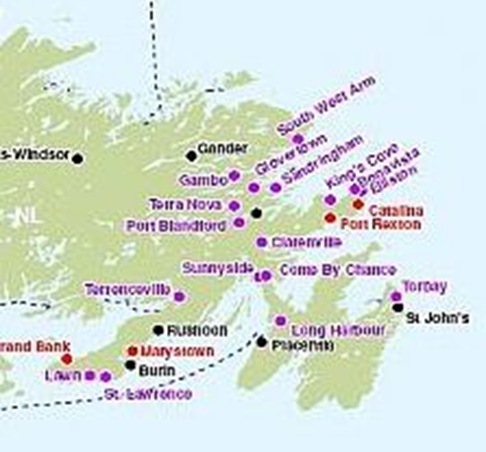Via Trudy Lundrigan and Flickr, here are some photos of the impact Hurricane Igor had on Lawn, Newfoundland.
Lawn is currently out of gasoline. A shipment of gasoline sent by ship to the southern part of the Burin Peninsula didn’t stretch far enough to cover the community. CBC quotes the mayor of the town saying:
"We're waiting now. We've got no gas here whatsoever," said Mayor Bill Lockyer, before calling the decision that put his community in this position "brainless."
Lockyer said given the road conditions, Lawn residents have the longest drive to the Grand Bank hospital of any Burin town. And the community of almost 800 is home to at least three people who require dialysis treatment, Lockyer said.
The provincial government is using some of the government’s own ferries to move supplies across Placentia Bay to the communities on the southern part of the peninsula. They are currently isolated by damaged bridges. While repairs are underway, it is possible they may only be able to handled reduced traffic loads for the first while after they are back in service.
CBC also quotes one resident who is concerned about the current state of affairs:
"We haven't seen any help at all," [Jenny] Tarrant said.
Tarrant said apart from what she can find online, she's not hearing any plans for relief. She said until Lawn residents get some answers about when aid is coming, concern will continue to spread.
Assessment of roads continues but the widespread nature of the damage continues to hamper recovery efforts. Canadian Forces engineers decided to postpone bridge installations on the Bonavista Peninsula Sunday pending an improvement in road conditions. The existing state of roads prevents heavy trucks from moving equipment into position.
All areas of the province now have electricity. Newfoundland Power crews completed the the job of reconnecting lines over the weekend and are now focused on dealing with individual homes and small clusters that have lost power due to tree damage to specific sections of the grid.
 A map released by the Government of Canada over the weekend gives some indication of the scope of the problem facing recovery teams. Towns marked in purple have declared states of emergency. those in red have food shortages. The map is current as of 1130 hours local time, Saturday 25 Sep 2010.
A map released by the Government of Canada over the weekend gives some indication of the scope of the problem facing recovery teams. Towns marked in purple have declared states of emergency. those in red have food shortages. The map is current as of 1130 hours local time, Saturday 25 Sep 2010.
While roads damage is keeping some communities isolated, recovery teams have airlifted fuel into a number of towns and villages.
- srbp -
